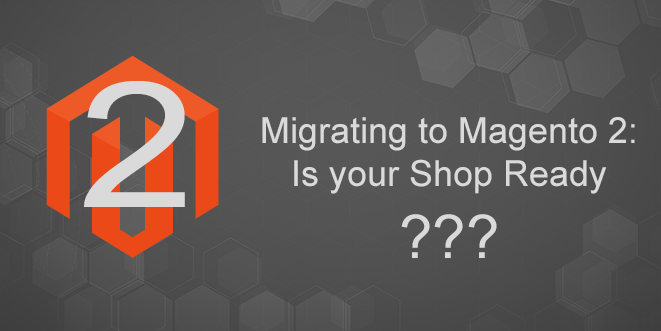By Brad Leslie, Certified Magento Developer at InteractOne
Magento 2 was released during Q4 of 2015, starting the next era of Magento within the eCommerce space. Originally announced in 2010, M2 has been long awaited by shop owners who are now left with a number of decisions to make regarding the new platform. Among the most important decisions are whether a shop should make the jump to M2 and, if so, when.
Magento 1 vs. Magento 2
There are some fundamental differences between Magento 1 and Magento 2 that shop owners need to understand before they can really evaluate whether the upgrade makes sense for them. While Magento 1 and Magento 2 are both Magento products, the file system and database structure are completely revamped in M2. This means that the M1 database (settings, orders, products, customers, etc) can’t be used directly with the M2 installation. Likewise, M1 custom module and theme files can’t be copied into Magento 2.
Magento has released a guide related to expediting the Magento migration process, but it is still a complex procedure and the difficulty is compounded by the customizations made to the M1 install.
Learning Curve
Even Magento 1 certified and Magento 2 trained developers are getting used to what’s essentially a brand new platform, but most developers are excited about the challenge and ready attack it head-on. All Magento 1 shops should, at the very least, be starting discussions about Magento 2 migration, if not planning the development process and launch of the Magento 2 site.
If a shop needs to rebuild their Magento 1 site quickly and without room for error, it should most likely be rebuilt on the latest version of Magento 1. Developers, project managers, marketers and solution partners, in general, are used to – and very good at – building out Magento 1 sites. Many have been doing so since the early versions of Magento. Additionally, shop owners and administrators are familiar with the admin processes of Magento 1. Magento did a good job of making sure the Magento 2 admin processes are similar to Magento 1, but some of the settings and other admin areas have been moved around.
Magento 2 Training
There is a learning curve for everyone when switching to Magento 2. If there are a lot of problems within the existing site, it’s possible that the proper training of admins and / or developers would be delayed in exchange for launching a Magento 2 version of the site quickly. Some people can learn on-the-fly and be successful, but there are sure to be growing pains with that approach that could be avoided given proper training before making the switch.
If It ‘Ain’t Broke Don’t Fix’ It
The final reason to stay on Magento 1 rather than upgrading to Magento 2 right away is if the site has few or no issues. While there are advantages to Magento 2, the saying ‘if it ain’t broke, don’t fix it’ is certainly applicable when dealing with what is often the main revenue stream for a company.
Ready? Time to Plan Your Magento Migration
If a shop owner has decided that upgrading to Magento 2 is right for them, the next step is to plan the “jump.” Design, development and training workflows are different for everyone, but a well thought out plan will mitigate the chances for failures across the board. Ensure a smooth migration by establishing ahead of time what each department will require –
- Developers should know which Magento 1 extensions exist for Magento 2 and what needs to be custom coded,
- Designers should know what is possible within the new base themes,
- Admins should know how Magento 1 processes translate to Magento 2, and
- Project managers need to understand any changes in how long something takes after the switch to Magento 2 is paramount to the success of a migrated Magento 2 shop.
The Bottom Line
If a shop has a successful Magento 1 site, or is migrating to Magento from another platform, there is no reason to delay the planning and development process. Magento has supplied a brand new documentation portal in preparation for Magento 2 and the Magento community will be learning / sharing more about their experiences with Magento 2 as time goes on.
If you’re wondering if you are ready for Magento migration, contact us to find out more and get started today.
